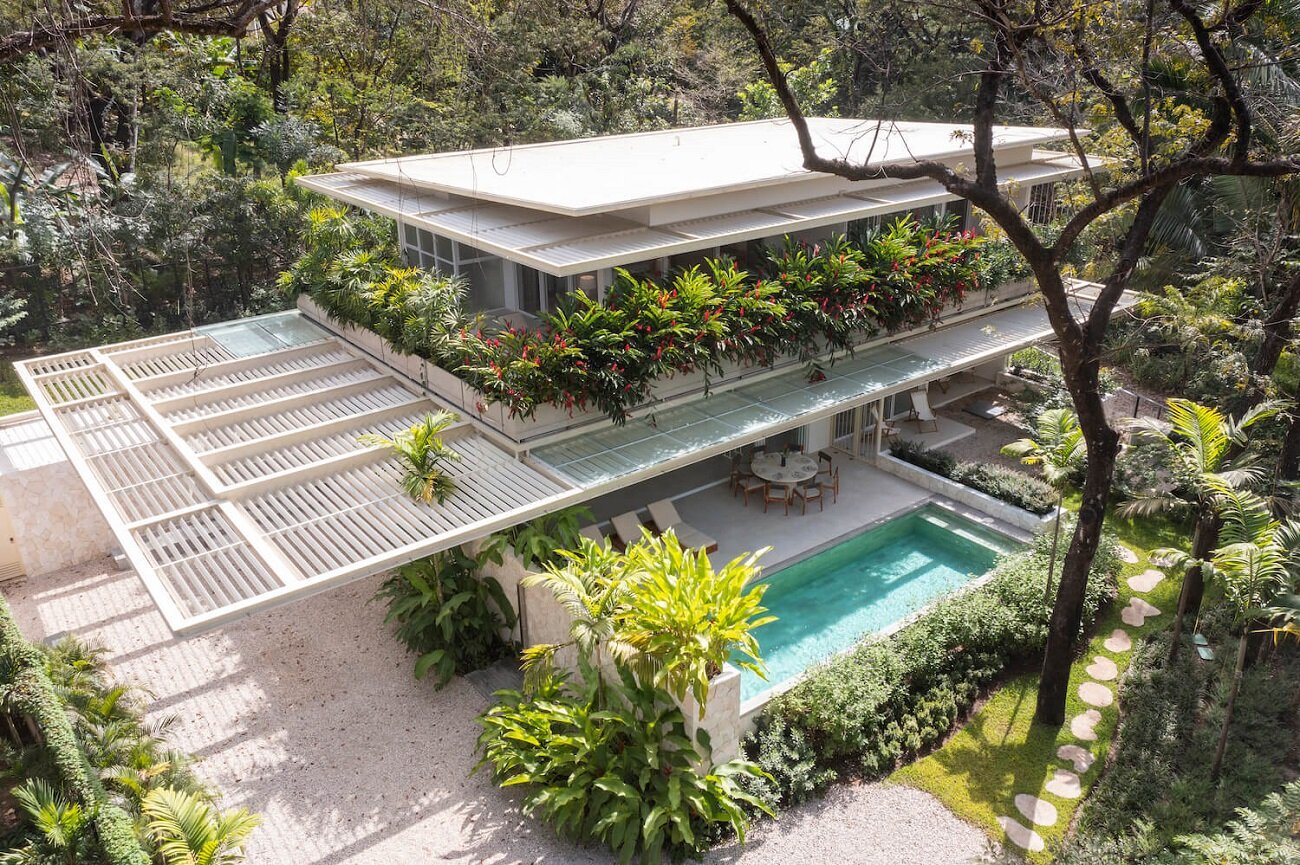#16876. Tropical Modernism: Facade with Integrated Green Belts in Forest Surroundings

This modern house exemplifies tropical architecture at its finest, where the natural environment and architectural forms engage in a harmonious dialogue. The facade demonstrates a masterful use of horizontal lines, creating the effect of hovering within the surrounding forest landscape. Particularly expressive is the multi-level structure with clearly defined floor planes that extend beyond the main volume of the house, creating deep shadows and protecting interior spaces from direct sunlight.
The upper level of the facade is distinguished by abundant greenery – a living "green belt" of tropical plants that serves not only as a decorative element but also as a natural temperature regulator. This facade design technique allows the building to blend organically into the surrounding environment while simultaneously improving the microclimate around the house.
The lower level is characterized by openness and transparency through the use of glass surfaces and minimalist supports. The transition between interior and exterior space deserves special attention – the terrace with a swimming pool and relaxation area becomes an extension of the living space. The suspended pergola structure of the left wing creates a play of light and shadow on the area in front of the house, adding expressiveness and depth to the facade.
The facade materials – predominantly light concrete and glass – contrast with the lush greenery of the surroundings, emphasizing the architectural forms. Yet the house doesn't appear alien in its natural environment thanks to thoughtful proportions and the integration of plant elements into the building's structure.